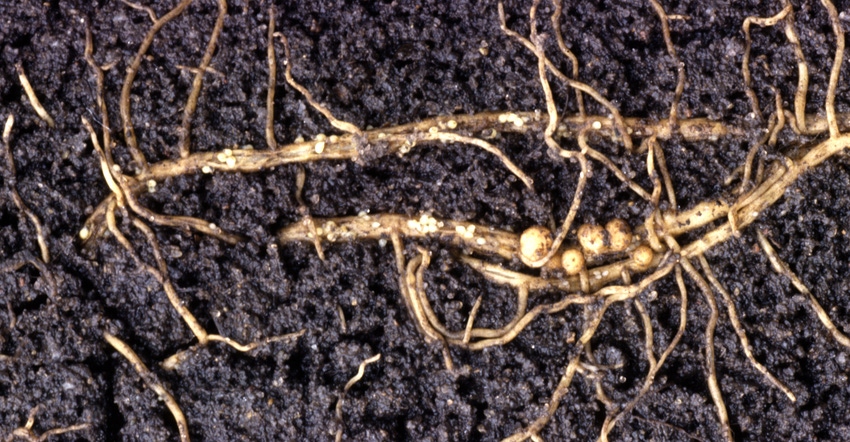
Soybean cyst nematode is not a new disease, and there is no denying this organism hinders soybean production. According to the University of Illinois, SCN is responsible for between 5% and 80% of yield loss in Illinois soybeans, depending on factors such as nematode population, precipitation and soil fertility.
“SCN is considered to be the No. 1 pathogen of soybeans in the United States,” says Nate Schroeder, crop scientist at the U of I. “It is uncommon to find a soybean field that does not have SCN.”
He says farmers have used SCN-resistant soybean varieties to control the pathogen. However, over the past 10 to 20 years, the nematode has been able to develop and overcome the primary source of resistance.
What now? Scientists have been working on the next step.
Esophageal glands of the nematode are important for developing saliva that gets into the plant roots, which leads to infection of the plant, Schroeder explains. Scientists understand this process; however, the signals and mechanisms for releasing saliva from these glands are currently unknown.
This is where Schroeder’s work with Lav Varshney comes into play. Varshney is an electrical and computer engineer at the U of I.
The idea behind their project is to reconstruct the nematode’s nervous system, Schroeder says. Research looks at the connectome, or complete structural connectivity of the nervous system, of the SCN esophagus. In particular, the team uses electron microscopy to look closely at the neurons involved in the process and piece them all together.
“Based on how all of these different neurons, muscles and gland cells are connected, then we’re able to make predictions about how the nematode functions,” he says.
Then Varshney steps in, using computer modeling to examine the neural network structure and determine the best ways to combat SCN.
“From a neuroscience perspective, this is only going to be the third or fourth organism whose neuronal network is reconstructed,” Varshney says. “It’s going to give us a lot of insight into how neural systems work in general. That scientific insight will help us understand how evolution works in certain ways.”
Schroeder hopes this research will lead to alternative strategies for controlling SCN. For example, many Illinois farmers use seed coats. So, a possible design could be a seed coat that focuses on the signaling within the nematode’s esophagus to prevent infection from occurring.
The research may have broader applications, as well. “There is a lot more than just soybean cyst nematode, in terms of parasitic nematodes, out there,” he says. �“So, we’ll be able to figure out ways of targeting some of these other important parasites.”
The project is an example of how diverse fields such as neuroscience and engineering can be used to benefit crop production.
“I’m in the College of Engineering, in the Electrical and Computer Engineering Department,” Varshney says. “So, it’s new and exciting for me to be contributing to Illinois agriculture.”
About the Author(s)
You May Also Like






